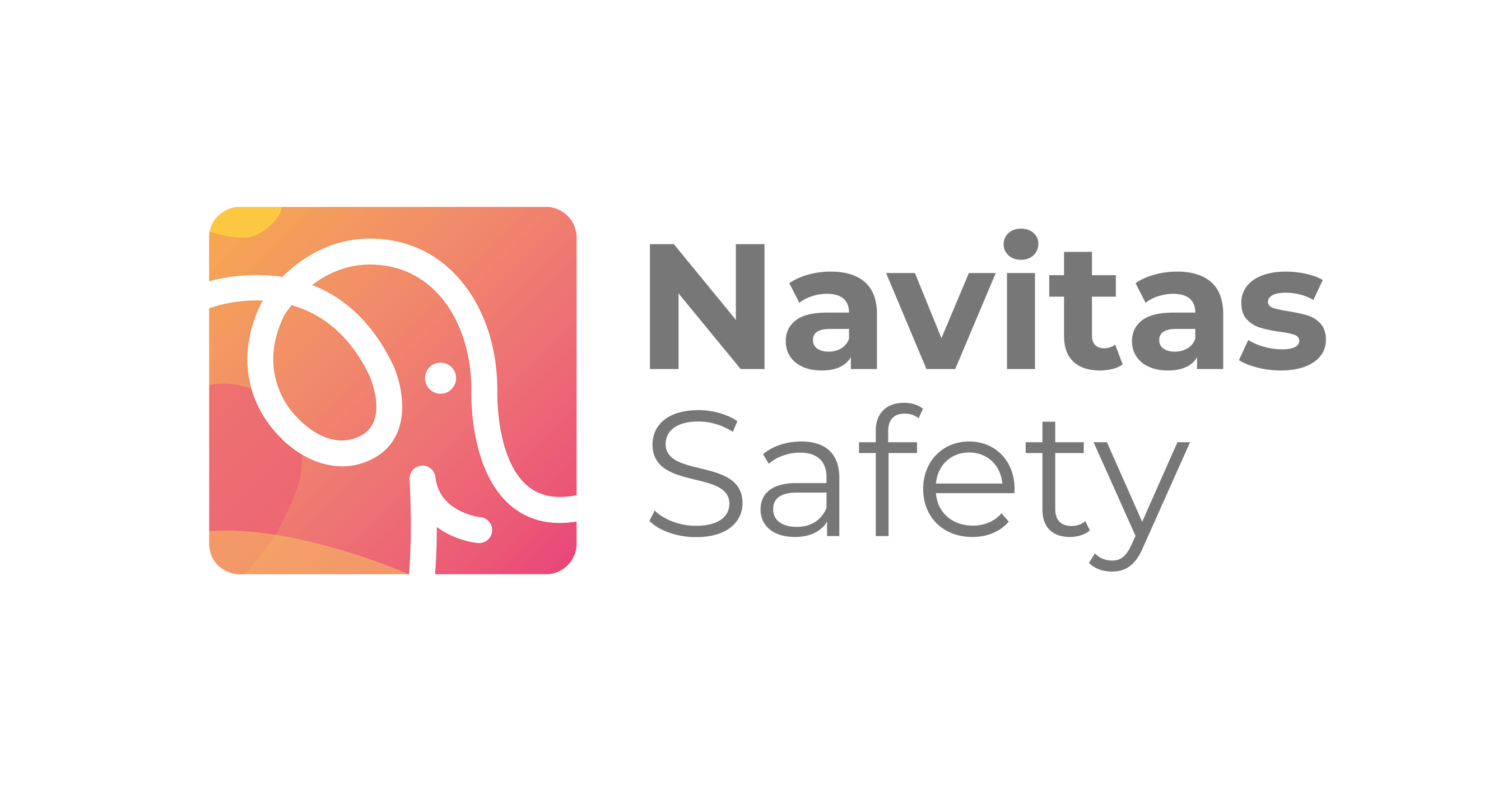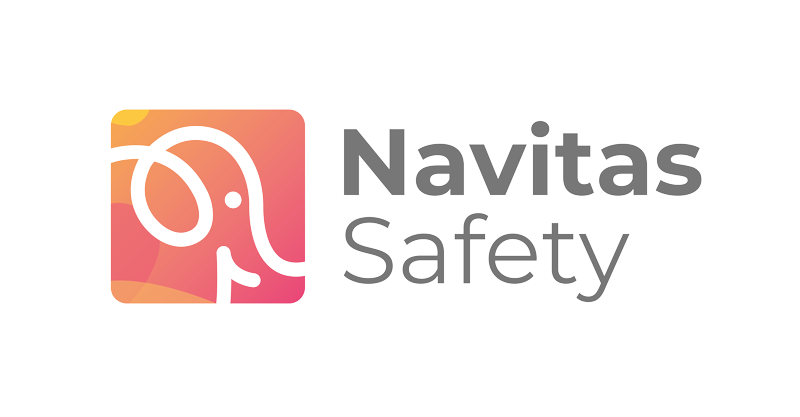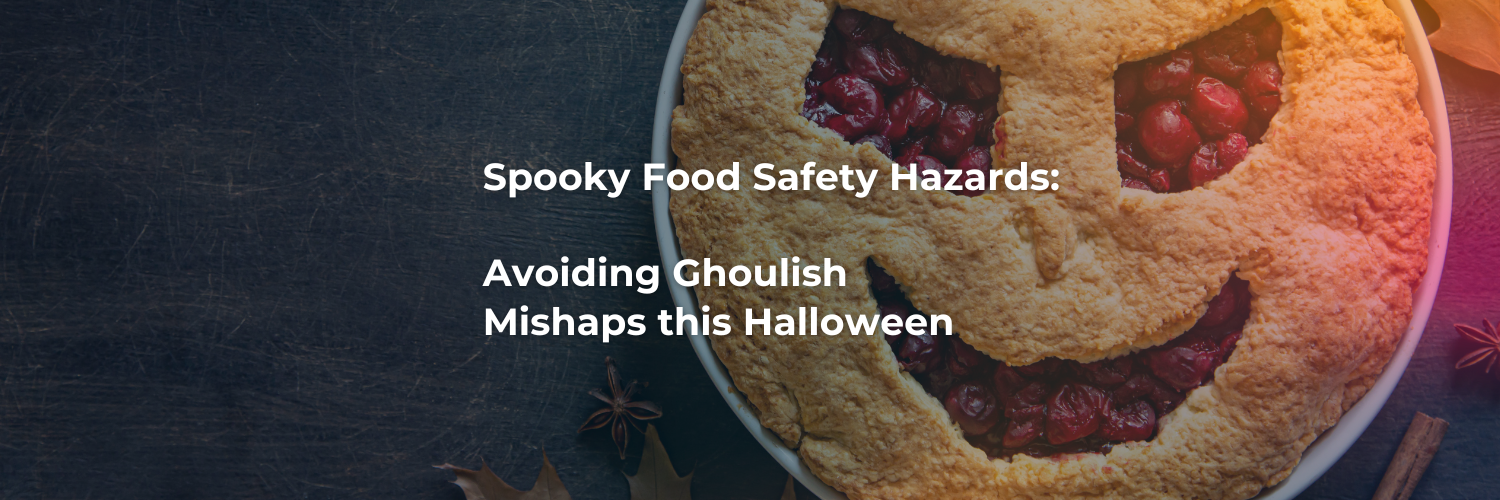Welcome to a spine-tingling journey through the very real realm of food safety hazards, just in time for Halloween.
In this blog, we’ll delve into the world of spooky food safety hazards, guiding you through the sinister pitfalls that can turn your treats into tricks. So, grab your torch and join us as we shed light on these ghoulish threats!
If you enjoy this Halloween content, you might also enjoy our spooky blog about the creepiest latest food trends… Read it here. 🎃
Food Safety Hazards #1
Pesky Pests and Creepy Crawlies
Right off the bat 🦇, we’re starting with the importance of pest control and keeping the critters out of your kitchen.
Pest infestations are one of the quickest ways to ruin your business’ reputation. The media love a pest infestation story, but sadly your customers do not.
You are legally required to maintain a pest-free food business in order to avoid food safety risks. Pesky pests create the potential for a range of different types of food contamination: from spreading germs and bacteria to becoming physical contamination. Heaven forbid they end up baked and served as part of your food offering! Putting the rat in ratatouille isn’t a good idea. 🐀
We’d like to say this never happens but, unfortunately, it does.
So, how do you prevent pests from becoming a food safety hazard in your business?
- Keep all food items stored correctly in sealed containers so pests can’t get access.
- Avoid storing food items on a floor. Food items are best to be kept elevated to avoid dirt and creepy crawly contaminants.
- All frozen and refrigerated items must be kept at the correct temperatures with clear use-by dates and disposed of at the appropriate time. Let’s not tempt fate by leaving mouldy food around.
- Maintain regular and thorough cleaning. We know this seems obvious, but sometimes dirt and food waste can build up in out of sight places. Such as behind large appliances, under cupboards and around bins.
- Ensure you have a daily cleaning checklists that cover all areas of your premises. Having clear cleaning processes makes sure nowhere is missed. Digital cleaning checklists, which remind staff to do their checks and alert managers if they’ve not been done, can really help to ensure cleaning checks are never missed. Let’s not serve up an all-you-can-eat buffet for our furry foes.
- If you do discover a pest infestation, act immediately. Securely throw away any food items which may have been contaminated. Then, take steps to uncover the root cause. You may need to call in an expert contractor to remove the pests if it’s become a real issue. Make sure that you check for any cracks or hiding holes, especially those with access to the outside. This is where your freeloading diners may be gaining access and will need to be blocked up and fixed.
Food Safety Hazards #2
Caution: Chemical Contamination
We totally encourage you to explore your inner mad scientist to concoct unique and fabulous new dishes to delight your customers. But, when it comes to the chemicals you’re using, let’s keep that to the approved types and safe methods.
Firstly, chemical contamination is one of the more tricky food safety hazards to spot. This is because chemicals are usually invisible and there’s no sign of contamination when you simply look at your food. Therefore, it’s of the utmost importance that you never use any ‘non-food safe’ chemicals in your kitchen environment, so there’s never a risk of chemical contamination from things such as cleaning products.
How can you ensure a safe food prep environment with chemicals?
- Check that all of the chemicals that you’re using in your kitchen are food safe. It will clearly state this on the bottle. If you’re still unsure, consult with your suppliers and ask them to confirm that the items you’re using are food safe.
- Avoid bleach. Bleach really isn’t a chemical that you want in your kitchen or food prep areas. It can cause some really nasty issues when ingested, so it’s best to keep it out of the way to keep your guests happy and harm-free.
- Ensure all bottle labels are clearly labelled. Avoid decanting chemicals into different bottles and never refill an existing bottle with a different chemical. If you do then you won’t have any way to check what the contents are.
- Use chemical wipes instead of sprays. You have far less control over a spray, so you can’t be as accurate in the direction in which the chemical is spurting out at. This can unknowingly cause chemical contamination if food is nearby. Stick to wipes as they give you far more control. They can also be discarded after use, further helping to reduce contamination.
Food Safety Hazards #3
Suspicious Suppliers
If the price seems too good to be true… it probably is.
We recommend that you seek reputable suppliers. Supplier relationships and supplier management are really key elements of food safety for your business. You need to ensure that your suppliers have the same high food safety standards as you do.
Questions you should ask:
- Can they provide full traceability, to the source, for their ingredients? If they can’t, then they also don’t know how safe their food supply chain is. So, it’s probably worth looking for a different supplier who is confident of their end-to-end supply processes.
- Ask them about their food safety processes and ask for a copy of their food safety management system. If they don’t have one or can’t provide any evidence that they have controls in place to ensure food safety then again, maybe it’s time to shop around!
- Are the goods in an appropriate state when they arrive? You should legally be checking any goods you receive as part of your food safety management system. Therefore, always check the goods yourself when they arrive at your premises. Check the quality of packaging you have received the goods in – is it appropriate for the item? And check the temperatures of the products, if required. Using a Digital Food Probe with all your supplier information already built-in will make this process super quick and provide you proof of why you have rejected a delivery.
Doing supplier checks can be very time consuming, so you can hire a third party Food Safety Auditor to do this on your behalf. They’re an expert and will be able to tell you if your supplier is a goody or a baddy. 🧛
Food Safety Hazards #4
Frightening Foreign Bodies
Please keep all body parts in the ride at all times!
Foreign bodies are one of the no.1 complaints received in restaurants. A customer finding an extra surprise in their dish is a one-way ticket to a terrible trip advisor review and a 1-star rating.
Consequently, it should be a top priority for you to uphold high food safety standards to prevent this from occurring.
What you can do to prevent foreign bodies becoming a food safety hazard:
- Knives and sharp objects in a fast-paced environment inevitably lead to a cut here and there. So it’s completely essential to ensure any cuts/wounds are covered with a safety plaster. However, these can occasionally fall off and end up in someone’s dinner. For that reason, you should be using kitchen/food safe plasters which are normally brightly coloured so they can be easily spotted if they do come off. Some also have a small metal chip in them. So running a metal detector over a plate just before you serve it should identify a freeloading plaster on it’s way to one of your guests.
- Kitchen debris can also be an issue – if your kitchen is in a sorry state of disrepair, then bits might break off and end up in your dishes. Maintaining a structurally sound and in good condition kitchen is essential. An EHO will be looking at the standard of your kitchen as part of their inspection, so make sure you keep on top of your maintenance!
Food Safety Hazards #5
Perilous Paperwork
What keeps you up at night? The sound of the Jaws theme tune as you think about an EHO approaching your door and rifling through your messy paperwork… 🦈
We know that an impending EHO inspection can feel like they’re about to suck the life out of your food business. But they’re really only there to make sure you’re doing everything safely.
One of the most common areas that food businesses fall down on is the food safety management system and confidence in management. Your site may appear clean and in order when they arrive, but if you can’t prove that you’ve been monitoring and keeping a record of your processes then they’re unlikely to give you a good rating. They need to have confidence that the standards they see on the day are always upheld.
So, what can you do?
Paper-based processes are the most unreliable way to ensure confidence in management: too easily misplaced, too often forged.
It’s a necessary evil and we know you didn’t start your business to complete paperwork, but you can make your life so much easier by doing it all digitally.
Digital Food Safety allows you to complete cleaning records and checklists in seconds. It also ensures your entire food safety management system is all in one place. This makes it super simple to present to your local EHO the moment they step through the door – with everything date stamped and staff signed off. Total confidence guaranteed.`
Food Safety Hazards #6
Dangerous Date Labelling
Unlike our witchy friends with their bubbling cauldrons of chaos, we do actually care about the use by dates of our items! 🧙♀️
This may seem common sense, but when you’ve got lots of stock, items can quite easily get shoved to the back of the cupboard or fridge and get forgotten about.
When you’re in a rush, you won’t always check the label, presuming the item is in date. So it’s really important to put measures in place to make sure stock rotation is happening and items are always used in time.
How to ensure good date labelling and stock rotation processes:
- When you get a new delivery, check the dates first and foremost – stock does sometimes get delivered with bad dates!
- Then, check the dates of any stock you already have, making sure you order this with the shortest date at the front.
- Never mix items with different dates. This can happen when you find yourself short on space, but you should not package or store differently dated products together. You may mistakenly use one of the items thinking it has the same use by date as the other, when in fact it is not longer safe to use.
- If date labels aren’t clear, add your own brightly coloured labels. It’s an extra step but can save you a lot of issues later, as you can quickly identify use by dates at a glance!
- Make it part of your process to check stock dates at the start of every day. You can use a digital checklist for this, so you can monitor that this is being done.
Food Safety Hazards #6
Team Training: Trick or Treat?
Food hygiene training is something that your EHO will be looking for – no tricks involved. They want to see that your team know about their food safety responsibilities and are confident in what they’re doing.
Your staff know the basics of food hygiene, but sometimes we all need a little refresher. This ensures that it’s at the forefront of our mind when we’re going about our busy schedule.
Top tips for team training include:
- Ensure training is up to date and is refreshed regularly. Level 1 basic food hygiene training should be refreshed yearly. Level 2 and Level 3 food hygiene training completed every 2-3 years.
- New starters should be trained straight away. A great way to introduce your new starter to your business is to get them to do their food safety training. It puts them in the right headspace from the start and ensures they don’t pick up, or bring, any bad habits into your food business.
- Do your safety training online! You don’t need to watch a stuffy food safety training video anymore. You can do all of your food safety training online, on a mobile phone, tablet or desktop. We offer all of our courses as part of our Online Safety Training Academy. It makes it super accessible and super easy… even a zombie could do it. 🧟
Food Safety Hazards #7
Terrible Temperature Control
Is your temperature control, out of control?
This is a key step throughout your food safety procedures. You must ensure that your fridges and freezers are at the right temperatures at all times, checking temperatures twice daily as a minimum.
Now… this is one of the most common areas where people falsify records. They forget to do their checks and quickly make them up at the end of the day. This will give you a one way ticket to hell. Just kidding. But, it can cause a real issue if the temperatures aren’t correct and if your EHO things they’ve been falsified.
You should also be checking that items you are cooking are reaching the right safe temperatures. You must also keep a record of this. Again, this is a common area where records are falsified and it can be really dangerous.
Tips to avoid terrible temperature control:
Remove as much manual data recording as possible: the easiest way to make sure records are done is to make it automated.
- Adding wireless temperature monitoring devices to your appliances means the temperatures will be automatically recorded 24/7 and you’ll be alerted if there’s an issue with the temperatures.
- Use digital food probes to digitally store cooking temperatures. If you’ve got a digital record with a smart probe, it saves time as it already has all your food item information stored in it and what temperature the item needs to reach to be safe so all the operator needs to do is probe and click – done! It will also show you if checks aren’t being done, as they can’t be falsified with a smart probe!
Well, we think that just about covers our spooky food safety hazards!
Food safety is absolutely vital and is always the one thing everyone tends to roll their eyes at. But using technology can really make it so much easier and ensure that everything is being done correctly.
If you need help with your safety processes, speak to a member of our safety team who will be able to advise you on how to operate safely.
Subscribe for more safety content updates:






